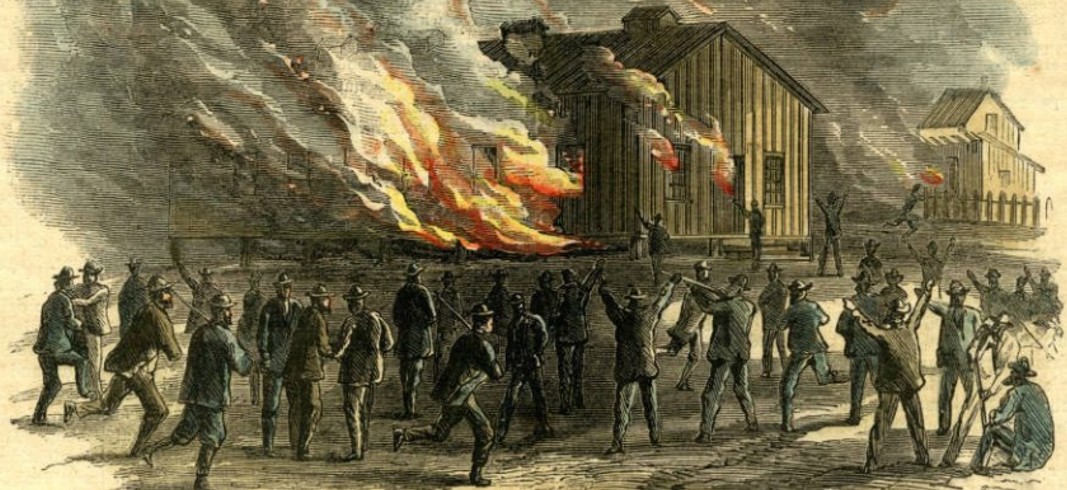By Guerry Hoddersen
After the Civil War, Radical Republicans in Congress passed legislation that required the Confederate states to swear loyalty to the Union and uphold the 13th, 14th and 15th Amendments. Federal law also mandated that each state draft a new constitution and hold local and state elections open to white and Black voters alike. This came to be known as the Reconstruction era and lasted from 1863-1877.
It is a little known and contested era in US history. You can get all the way through high school and college without knowing the first thing about it. If you do know something, it’s likely to be wrong.
Historian Kidada E Williams aims to change that in her powerful new book, I Saw Death Coming: A History of Terror and Survival in the War Against Reconstruction. Hers is a war on silence about the violence, trauma and injustices done to battered Black folk as they emerged from slavery only to face pillaging, jealous white neighbours.
Reassembling what family you can find
Williams makes you feel what it was like to be a newly freed person. You don’t know where your family is, you don’t have a roof over your head or even a piece of earth to lay it on, you don’t have an income or likely a trade — in short, you don’t have the necessities of survival and people are dying all around you of hunger and epidemics.
Still, after a few years you have reassembled what family you can find, perhaps have a small plot of land and children to help you work it due to the Southern Homestead Act, a cow or a pig. You’re settled near other freed people and the community has built a school and a church. And now you want to vote and run for office.
Such were the combustible elements that sparked what Williams calls “the war on freedom.” This was the war after the Civil War. Its militias consisted of apoplectic sympathizers of the Confederacy who, having lost on the battlefield, won the peace using sadistic intimidation against US citizens trying to exercise their new rights.
The goal of this war was not to re-enslave Black people; slavery involves investment and the risk of financial loss. Better cheap, brutalized “free” labor which must provide all the necessities of life at no cost to the employer beyond wages.
To hide their crimes white southerners claimed Reconstruction was a failure due to corruption and the inability of freed people to govern. This bastardized version of things took root post-war, Williams writes, in both the North and West where people were eager to forget the recent national bloodletting and whites expected there to be trouble between southerners and the formerly enslaved.
Heroism by people determined to stand up for their rights
This became known as “The Lost Cause” ideology. It prevailed with few exceptions for decades. WEB Du Bois’ seminal 1935 work Black Reconstruction in America, 1860–1880 was the earliest to challenge it.
Powerful words. Williams draws on two sources for the first person accounts that form the body of this powerful work: thousands of survivor testimonies collected by the federal government in 1871 as part of the “Klan” hearings, and interviews conducted by the 1930s Works Progress Administration (WPA) to collect oral histories from slavery’s dwindling survivors.
Theirs is a story of heroism and bravery by people determined to stand up for their rights. It is also a chilling story of destruction and loss, of being abandoned by Congress as the Radical Republicans died or retired, of being “disastered” as one survivor put it.
Through these voices, Williams wants us to understand how the chaos, betrayal and wounds of Reconstruction’s overthrow is shaping the violence against African Americans today. She wants us to know the war is not over. That when we sing the words of the Black National Anthem — “We have come over a way that with tears has been watered/We have come, treading our path through the blood of the slaughtered” — this is history put to poetry by James Weldon Johnson, a little over a decade after the end of Reconstruction.
[Picture top: Memphis, Tennessee, 1866 — A school for Black children is torched by a white mob. From Wikimedia Commons]
This review is from the US Freedom Socialist Party website and the original can be found here.
The book can be bought here.



